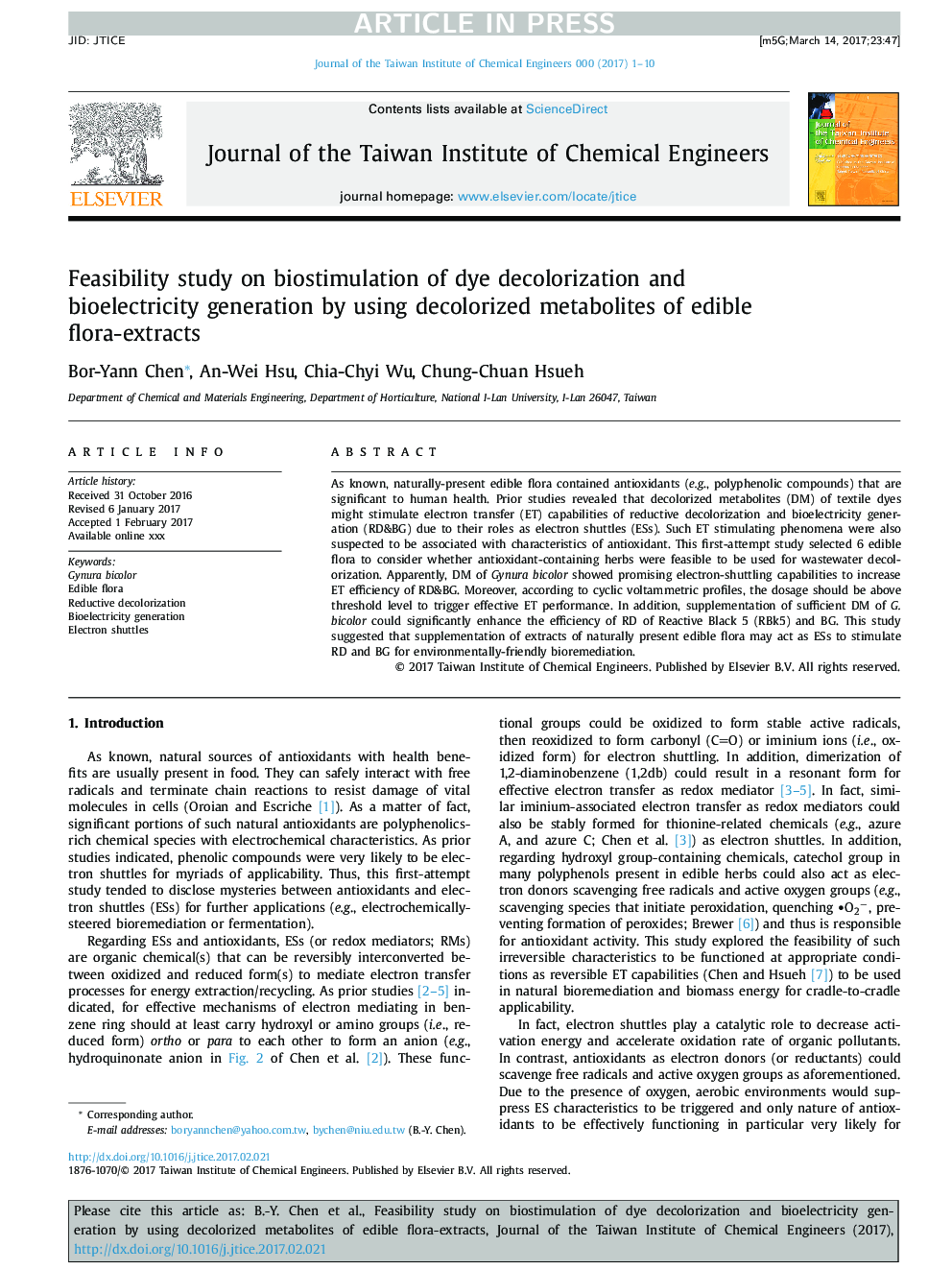| Article ID | Journal | Published Year | Pages | File Type |
|---|---|---|---|---|
| 4998549 | Journal of the Taiwan Institute of Chemical Engineers | 2017 | 10 Pages |
Abstract
As known, naturally-present edible flora contained antioxidants (e.g., polyphenolic compounds) that are significant to human health. Prior studies revealed that decolorized metabolites (DM) of textile dyes might stimulate electron transfer (ET) capabilities of reductive decolorization and bioelectricity generation (RD&BG) due to their roles as electron shuttles (ESs). Such ET stimulating phenomena were also suspected to be associated with characteristics of antioxidant. This first-attempt study selected 6 edible flora to consider whether antioxidant-containing herbs were feasible to be used for wastewater decolorization. Apparently, DM of Gynura bicolor showed promising electron-shuttling capabilities to increase ET efficiency of RD&BG. Moreover, according to cyclic voltammetric profiles, the dosage should be above threshold level to trigger effective ET performance. In addition, supplementation of sufficient DM of G. bicolor could significantly enhance the efficiency of RD of Reactive Black 5 (RBk5) and BG. This study suggested that supplementation of extracts of naturally present edible flora may act as ESs to stimulate RD and BG for environmentally-friendly bioremediation.
Related Topics
Physical Sciences and Engineering
Chemical Engineering
Process Chemistry and Technology
Authors
Bor-Yann Chen, An-Wei Hsu, Chia-Chyi Wu, Chung-Chuan Hsueh,
